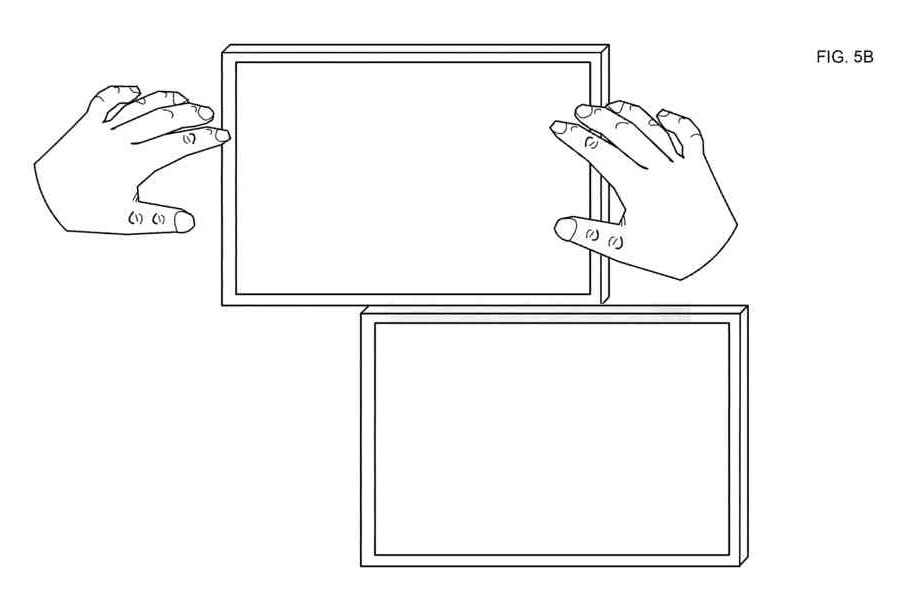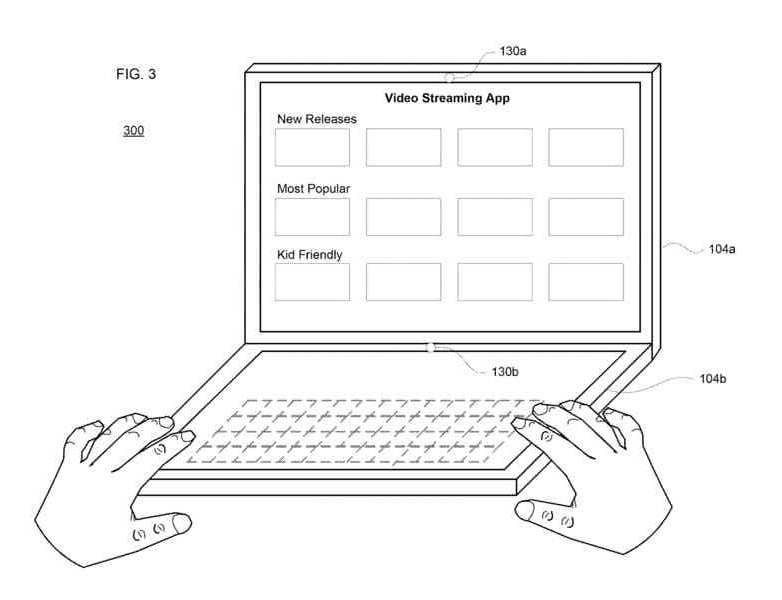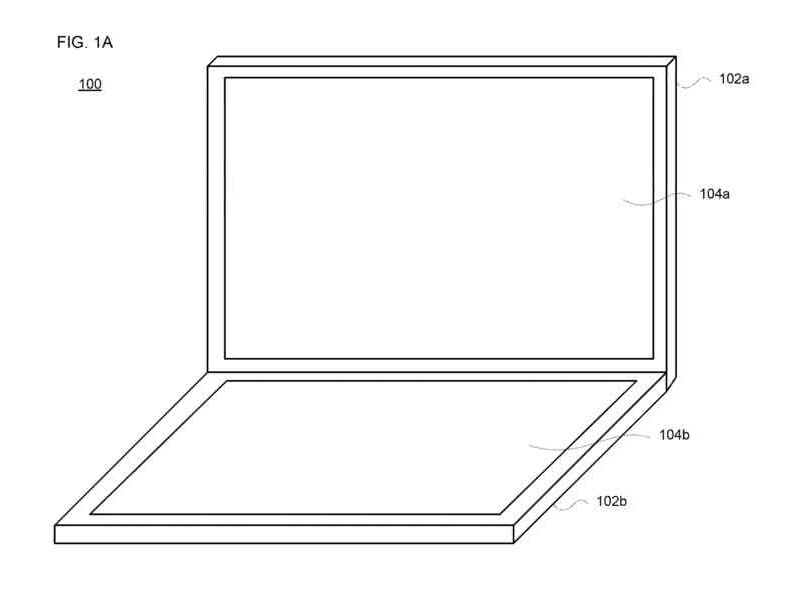Affiliate links on Android Authority may earn us a commission. Learn more.
Google has patented a dual-screen, double tablet, Frankenstein's monster of a laptop
Published onNovember 28, 2017

Google isn’t one to shy away from a bold idea — it tends to have many of these in the works at any given time. Google/Alphabet might have recently let go of robotics company Boston Dynamics, but it may not be finished with Transformers™-like products just yet.
According to a report from Slash Gear, Google has patented a device concept that would make use of two touchscreen displays, said to be able to be arranged “as a laptop, tablet, netbook or other type of portable electronic device.”
We’ve seen products similar to this before, such as the Lenovo Yoga Book. Unlike that notebook, however, the bottom panel on Google’s device seemingly wouldn’t be as limited in its functionality. Whereas the Yoga Book could help you type or even write by hand, Google’s concept would potentially have the same hardware inside both displays.
Yes, these screens would be detachable and able to work independently of each other — you’d essentially get two complete tablets in one. “In this mode of operation,” Google wrote in the patent filing, “applications and other software may be instantiated as shared instance or separate instances, giving the user of each device ultimate flexibility in device operation and content consumption.”

But, like some kind of Power Rangers™ accessory, when the devices come together they are even more powerful. In the patent filing’s introduction, Google wrote: “When physically coupled together in a first mode of operation, the display housings may be arranged as a single portable electronic device such as a clamshell laptop. In this mode, the system is configured to share computing power and other resources among the two housings, providing a more powerful and robust device than when the housings are separated.”
What kind of applications could this provide for? Well, the device would be a natural fit for any kind of two-person game or project, though that would be true if you simply owned two tablets. So, for me, the most interesting possibilities lie in context-based use cases.
Like the Yoga Book, the bottom screen would be useful as a keyboard if you were in a word document on the other screen; similarly, it would also be useful if it turned into a writing tablet if you were working in a drawing program.

But what if this was taken to greater lengths, with one touchscreen becoming, say, a mixing console if you were working in an audio program like Pro Tools (this shouldn’t be difficult for programs where a console view already exists), or a set of dials and sliders for changing color variables in an image editor like Photoshop.
Of course, any kind of split-screen or dual monitor viewing would also be possible in some fashion here too.
Google filed the patent with the United States Patent and Trademark Office (USPTO) back in May 2016 so it’s had the idea for at least a fair bit of time already. Do you think there’s a chance we’ll see this concept come to fruition? Let us know in the comments.